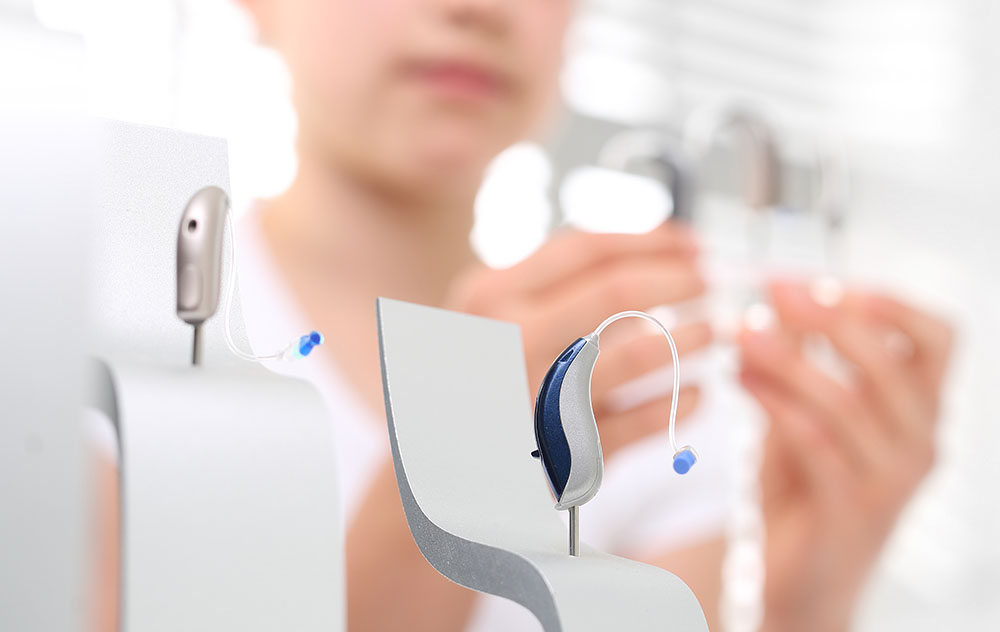- Home
- Hearing Loss
- Hearing Aid Use And Care
4 Steps to a Successful Hearing Aid Evaluation
2020-09-17 When seeking treatment for a hearing problem, you will first see an audiologist for a hearing test. This a multi-step process carried out by an audiologist in order to determine the extent of your hearing problem, enabling them to recommend the best treatment possible for your specific needs. If your hearing test suggests you could benefit from hearing aids, your audiologist will schedule nan evaluation to help you discover the technology most compatible for your lifestyle, hearing loss and budget needs.
Here are the four major steps that you can expect when taking part in a hearing aid evaluation and what you can do to make your evaluation a success.
1: Testing your hearing
Before you can be prescribed the right hearing aid, you will first need to take a hearing test.
An audiologist will begin by asking you a few questions to get an idea of your lifestyle and the nature of your hearing problem. You can expect a few questions about your health history and may be asked to provide a background on when you first started noticing problems. They may also ask about your balance and whether you’ve been experiencing tinnitus.
Your ears will then be examined to check for any visible problems. After this the hearing test will begin. The nature of the test will vary depending on the hearing problem. For hearing loss, it will generally involve playing sounds at an ever-decreasing volume – you will be asked to press a button every time you hear a sound. You may be asked to wear headphones and possibly a headband with a vibrating pad.
The results of this test will determine the extent of your hearing problem. From here, an audiologist will be able to recommend the right hearing loss treatment option, which may include wearing a hearing aid.

2: Choosing a hearing aid
If a hearing aid is recommended, you will then have the option to look at different device styles in order to choose the best one for you.
The three main styles are in the ear (ITE), behind the ear (BTE) and in the canal (ITC). Certain styles may be better suited to specific hearing conditions, in which case your audiologist will recommend a style. When choosing a style, you may also want to consider the cost, the comfort and your lifestyle.
Feel free to ask your audiologist for advice if you are unsure of any features or have any concerns with specific styles. You may be able to touch and even test out the sound of certain hearing aids.
3: Fitting the hearing aid
Once you have chosen your hearing aid, extra steps may be necessary for fitting and adjusting it. Certain hearing aids may require a custom fitted earmold, in which case an impression will need to be taken. The hearing aid will also need to be programmed to meet your specific hearing needs.
The hearing aid may need to be sent off to a manufacturer – the manufacturing process may take several weeks depending on the hearing aid. You will be notified when your hearing aid is ready to pick up.
4: Learning how to use your hearing aid
Once your hearing aid is ready to pick up, an audiologist will be able to talk you through how to use it. This may include how to adjust your hearing aid, when to wear it, how to clean it, which batteries to use and where to store your hearing aid. Some of this information may be given to you while initially choosing your hearing aid, but an audiologist will be able to offer a recap.
If you have any questions about how to use your hearing aid, you should use this opportunity to do so. Don’t be afraid to ask your audiologist to repeat information if necessary – there’s more to hearing aids than many people realize. It’s important that you know how to look after your hearing aid, as it could extend its life and save you money.

Why choose us?
At Hear for You Hearing & Balance Center, you can expect friendly and professional support. Our team of audiologists have carried out countless hearing aid evaluations and are incredibly knowledgeable. We’ll guide you through the entire process and answer any questions that you may have.
Latest
- 4 Essential Communication Rules for Family Members of Hearing Aid Users
- Hearing Aid "Break-In Period": Say Goodbye to Discomfort, Hello to Clear Sound
- The ultimate guide on how to choose hearing aids for seniors
- In addition to performance, how do parents choose children's hearing aids?
- Hearing Care Professional: How Do You Maintain Your Hearing Aids Regularly?
Hearing Aid Use And Care













All 0 comments